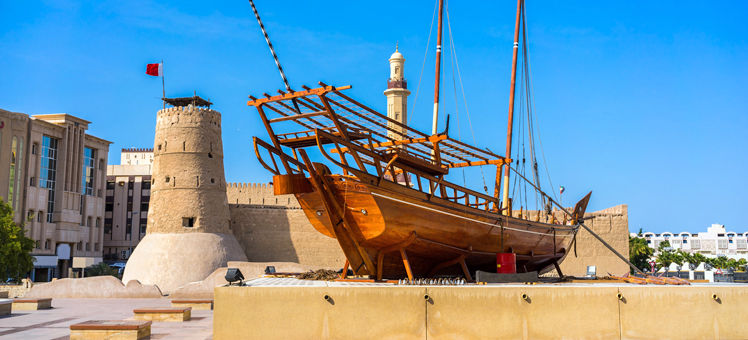 The Dubai art scene is developing fast. The Opera District is the downtown cultural hub of the future, while new galleries and exhibitions open all the time in Al Quoz. There is also an older Dubai behind the modern skyline, where you can explore Bedouin and Emirati traditions.
The Dubai art scene is developing fast. The Opera District is the downtown cultural hub of the future, while new galleries and exhibitions open all the time in Al Quoz. There is also an older Dubai behind the modern skyline, where you can explore Bedouin and Emirati traditions.Major players in the Emirati art world have said they want to cultivate the desert, and make Dubai a global center of creative energy. Painters, sculptors, and photographers from across the Emirates, the Middle East and beyond now have regular exhibitions in the city. There's even a growing street art scene around Al Quoz and Aleskeral Avenue. Plenty of gallery space is also given over to much older Persian and Arabian artworks.
The Majis Gallery
Founded in 1989, this is now the oldest of Dubai's galleries, and a vital part of the city's creative community.
Al Musalla Roundabout, Al Fahidi, Bur Dubai, Dubai.
The Empty Quarter
Named after the vast expanse of sand to the south of the Arabian Peninsula, this gallery specializes in fine-art photography. From landscapes to high fashion, the exhibits feature hypnotic shots by Eve Arnold and many other emerging talents.
Gate Village, Bldg 02, DIFC Dubai.
Long before the ultramodern skyscrapers went up, Dubai was a small coastal settlement of traders and pearl fishers. The city's past life is still visible around Dubai Creek, and the nearby neighborhood of Al Bastakiya is now better known as Al Fahidi Historic District. There you can wander narrow, atmospheric alleys lined with old wind towers, new art venues, and cool, shaded cafés as you get a feel for local heritage.
Dubai Museum
Dubai's oldest cultural treasures are housed inside its oldest surviving building, Al-Fahidi Fort, built in 1787. Displays of sailboats, weapons, and ancient artefacts help you trace the area's rich history.
Al Fahidi St, Bur Dubai, opposite Grand Mosque, Near Arabian Court Hotel, Dubai.
The Heritage and Diving Village
Dubai's other main historic neighborhood is Al Shindagha, home to this colorful showcase for Emirati arts and crafts. The diving village celebrates pearl hunters who held their breath with nose-plugs.
Al Ahmadiya School & Heritage House, Shindagha Historic District, Dubai.
Nomad tribes were crossing and camping in the desert around Dubai centuries before the oil boom, and many Bedouins still live much the same way as their ancestors. To get a real taste of that lifestyle, you need to venture out of the city and over the dunes to an authentic Bedouin camp. There you'll hear the nomad's stories, eat their cuisine, and learn about an ancient culture that still thrives in a hostile environment.
Bedouin Oasis, Ras Al Khaimah
This visitor-friendly Bedouin camp offers something close to the real nomad experience. You can sleep in goat-hair tents, eat saj bred hot from the underground oven, and ride with Arabian horsemen.
Near Banyan Tree Al Wadi resort, Ras Al Khaimah.
Media City Amphitheatre and the Trade Center in Meydan are major concert venues, attracting big-name musicians and comedians from all over the world, and attracting huge audiences out to see them. From performance spaces in vast shopping malls to smaller stages in well-funded community centers you'll also find that Dubai makes room for Shakespeare plays, live Arabian folk tales, ballet, and even Bollywood productions.
The Music Room
Rock, pop, hip-hop, thrash metal - all forms of live, loud music are taken very seriously by the staff and clientele at this intimate alternative venue.
Majestic Hotel, Al Mankhool Rd, Dubai.
Dubai Community Theatre & Arts Centre
This arts complex includes a main stage, dance studio, and an exhibition area called Gallery of Light. The theater has hosted productions as diverse as The Tiger Who Came To Tea and Shakespeare's Twelfth Night.
Top floor, Mall of the Emirates, Al Barsha 1, Dubai.